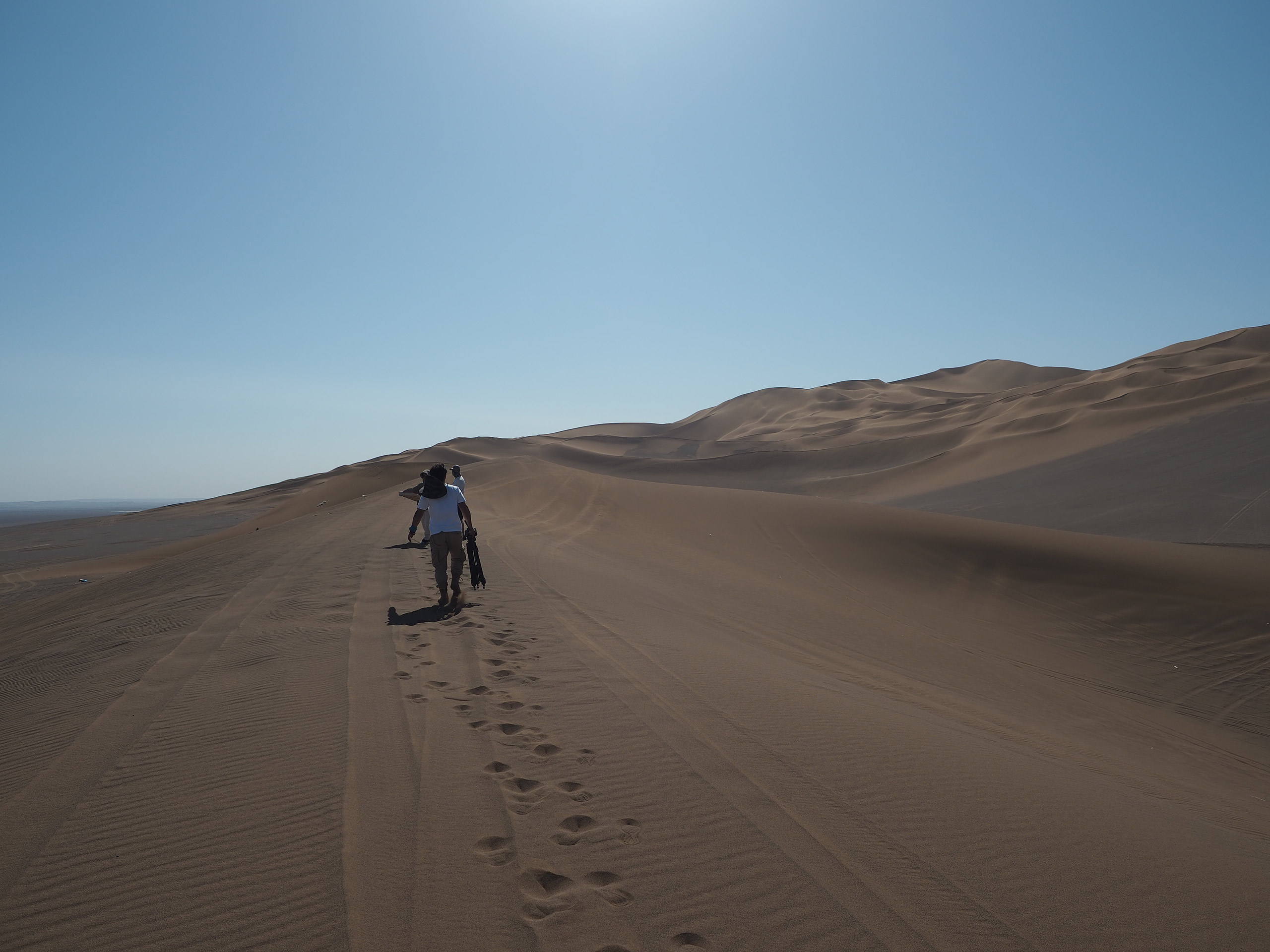






库木塔格 Kumtag Desert 90°33’27E-42°84’86N
彩色视频,声音;水墨 矿物颜料 宣纸;亚克力板上喷绘 Color Video, sound; ink and mineral pigment on paper; spray painting on acrylic
06’06”;45 x 45 cm;100 x 100 cm
库木塔格沙漠独特的自然地理条件使得沙漠与城市边界清晰互而不干扰的共存了千年。与作为贯穿主题的“边界”问题息息相关。
作品首先想要探讨关于“边界”的范围。边界并不是一条明显的局促的分割线,而是一个更为宽泛的地带。这一想法的形成起源于《须弥》这一系列作品。《须弥》源于‘芥子纳须弥’,微观即宇宙。科技的发展欣欣向荣让人振奋,但不能假装衰败不存在,中国人很早就明白了这个道理。宏观微观,循环往替,生机勃勃。
之后进入对“边界”的探索,这里的“边界”有两个层面:一是视觉层面:画面的红花来源于真实自然界中,我尝试通过对画面外延的延伸和本身花体的变形进行探索。二是精神层面:红花在中国一直是一种象征性的存在,结婚,剪彩,奖励等等时刻都有着重要的象征意义,然而这些精神载体在活动结束后往往会被人们遗弃,就如同“刍狗”在祭祀结束后的下场。而我想把这种精神象征物质化,使它可以更长久的保留下来。
最后通过影像更深入的考虑‘自然与人造物的边界’,有对比而不对立,因为人也是自然的一部分。这是一个层层深入的过程:画面本身的变形和对边缘的试探,到亚克力打印作品与原作的边界范围和平衡关系,到透过亚克力的沙漠景象和周边环境的关系,到绘画作品(作品材料全部为天然材料)和自然的关系。
作品也是关于虚与实的讨论,花开为实,花败为虚,生命之气为虚,不改变为实。而沙漠中开出绚丽的花是精神性的。
The unique natural and geographical conditions of the Kumtag Desert have created one of the world’s few deserts in close proximity to an urban environment. This boundary between desert and urban city has existed clearly and without interference for thousands of years. This real, geographical boundary underpins the overarching theme of “boundaries” throughout this project.
In the Kumtag Desert, I explore the scope of “boundaries”. I believe that boundaries are not merely lines that divide territories, but rather zones that connect scopes. This idea originated from the Sumeru series. The name “Sumeru” comes from “a mustard seed containing Mount Sumeru”, which means that the microcosm is the universe. While the development of technology flourishes, we cannot deny the existence of decay. Chinese people have long understood this principle — embracing death to give birth, and embracing life to face death. Macro and micro, internal and external, replacing each other cyclically, full of vitality.
Then I move on to explore boundaries in art. Here, “boundaries” occupy two layers of meaning: one is on the visual level, where the red flowers in paintings are derived from red flowers in the natural world and where the theme and expression of painting finds its extension on the painted surface. The other is on the spiritual level, where red flowers bear socio-spiritual meaning, symbolizing in Chinese culture important moments such as marriage, ribbon cutting and awards. But these flowers, as spiritual carriers, are often discarded after the ceremonies or activities, just like the fate of “straw dogs” after the sacrifice. I want to materialize this spiritual symbolization, so that it can be preserved and extended.
Finally, I delve deeper into the “boundary between what is natural and what artificial”, contrasting but not opposing, as humans and our creations are also part of nature. This is an in-depth process: from the transformation of the painted image and the edge of its painted surface, to the boundary between prints and original works of art, then to the relationship between the desert and its view as seen through an acrylic plane, and finally to the relationship between painting — made entirely of natural materials — and nature itself.
The boundary in this work is also a discussion of “the virtual and the real”. Blooming flowers are real while withered ones are virtual; the vitality of life is virtual, yet its constancy is real. Are not the gorgeous flowers blooming in the desert thus spiritual?